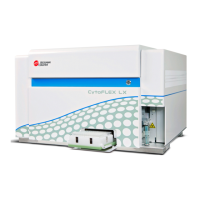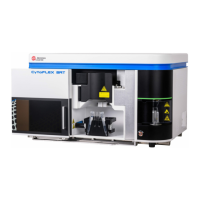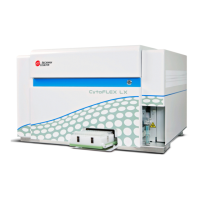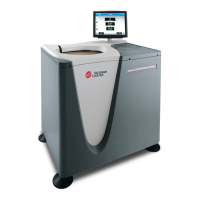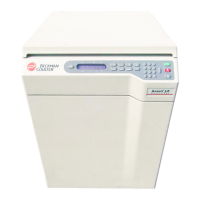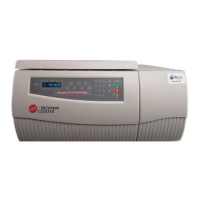PN 177196BB
8-7
SYSTEM DIAGNOSTICS AND MAINTENANCE
RECOGNIZING NORMAL INSTRUMENT OPERATION - CYCLE DESCRIPTION
8
8.2 RECOGNIZING NORMAL INSTRUMENT OPERATION - CYCLE DESCRIPTION
A Objectives
When you have completed this topic, you will be able to:
B Identify and describe the functions of the main components used in sample flow.
B Identify the start conditions prior to initiating a cycle.
B Identify the pierce position.
B Explain how the final RBC/Plt dilution is made, including reagents used in the process.
B Explain how the WBC/BASO dilution is made, including reagents used in the process.
B Explain how the DIFF dilution is made, including reagents used in the process.
B Explain how the final Hgb dilution is made, including reagents used in the process.
B Explain what portions of the cycle are eliminated by selecting the CBC panel.
B Explain how the tangential flow of reagent mixes the sample and reagent.
B Explain the purpose of the mixing bubbles entering the DIL1/HGB bath.
B References
The cycle description is not covered as a separate topic in the Online Help System or the
Instructions for Use manual. To review sample dilution preparation or sample analysis
characteristics, refer to:
r Heading 2.5 SAMPLE ANALYSIS OVERVIEW
r Heading 2.6 SAMPLE ANALYSIS
Tube holder Holds the tube in the correct position for piercing.
Tube holder detection switches Detects the position of the tube holder, identifying which hole is in the piercing
position.
Tube holder assembly position
switches
Detects the three positions of the tube holder assembly: open, closed, and
sampling (initiates a cycle).
Tube mixer arm Removes the specimen tubes from the cassette, one or two at a time, mixes them
and returns them to the cassette.
Vertical traverse assembly r Supports the sampling syringe
r Moves the piercing needle down for piercing the specimen tube
r Moves the probe down into the specimen tubes and the baths, so that samples
can be aspirated and dispensed.
Waste syringe 1 r Provides the vacuum that drains the RBC, DIL 1/ Hgb, and RINSE baths to
isolator 2.
r Provides the pressure for mixing bubbles in the RBC and DIL 1/ Hgb baths.
Waste syringe 2 r Provides the vacuum that drains the DIFF bath via isolator 1, that pulls DIFF
sample from the DIFF bath toward the sample injector syringe, that fills the
diluent reservoir, and that suctions the end of the probe.
r Provides pressure for mixing bubbles in the DIFF bath.
Table 8.1 Fluidic and Mechanical Modules/Components (Continued)
Component/Module Functions
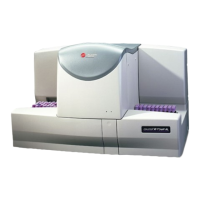
